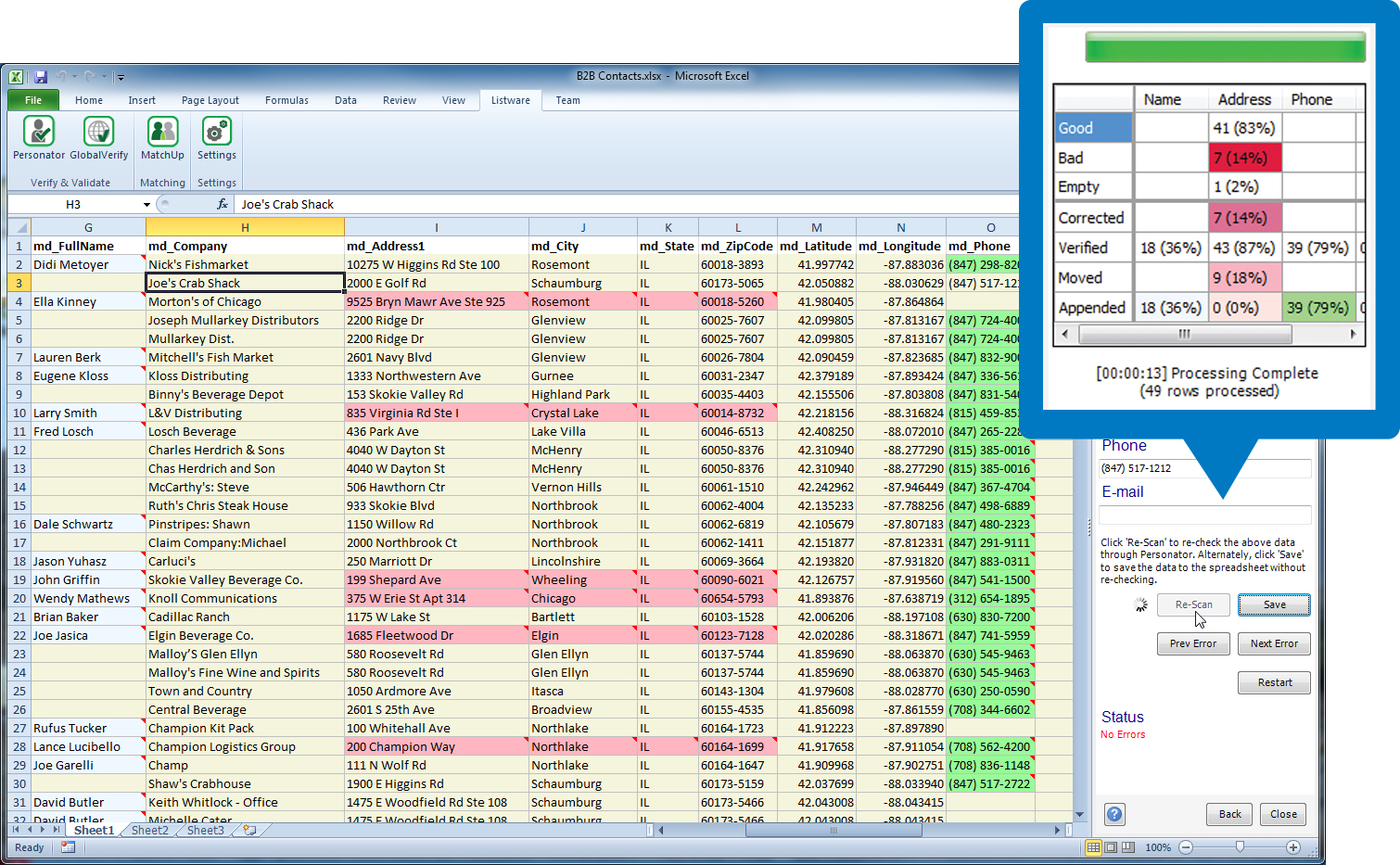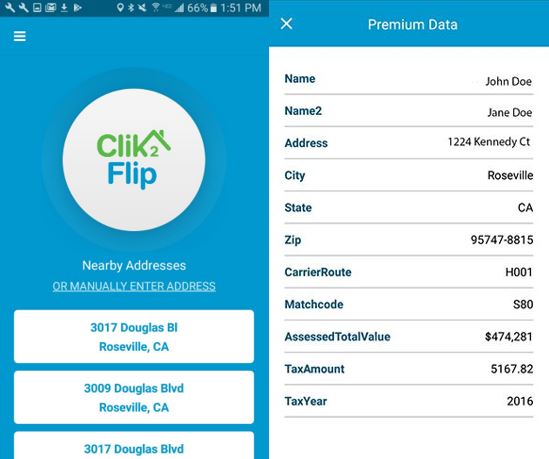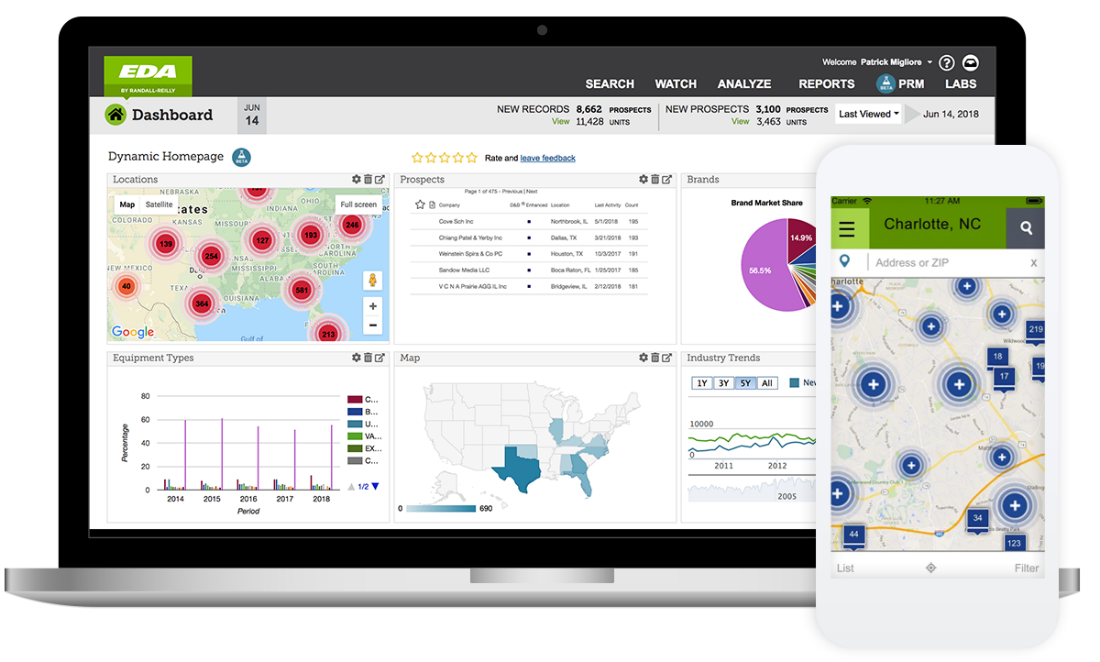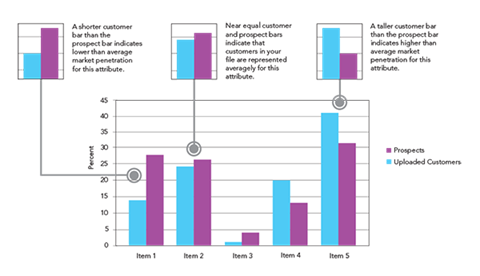Dirty data makes it hard to serve clients and grow business. This challenge applies to any industry aspiring to build loyal customers with great service and smart products. Insurance agents optimizing policies, retailers reliably delivering the goods, online gaming platforms recognizing their best customers with special offers, banks combatting fraud and onboarding customers easily and seamlessly from their mobile devices, get-out-the-vote campaigns seeking lookalike constituents… in these settings and so many more, the customer journey and the communication they receive is everything.
Whether the “customer” is a homeowner, shopper, or voter, their pivotal role in defining a brand's success cannot be overstated. Yet according to Gartner, three percent of customer contact data decays every month. That means around 25% of the average CRM database becomes inaccurate annually. In a single year, changes are immense:
-18% of all telephone numbers change (according to ReachForce)
-22.5% of email addresses decay (according to HubSpot)
-20% of postal addresses change (according to the USPS)
-10% of CRM records are duplicated (according to On the Record)
If a customer’s perception and experience with a brand determines its market standing, customer experience must be a priority. Understanding and reaching them requires a data hygiene plan – the key to retaining current customers and nurturing new ones. A straightforward but consistent and comprehensive checklist covers the bases.
1.Clean your CRM at least twice a year
Run customer and prospect lists through a data cleansing program to verify addresses, mobile and landline phone numbers, and email addresses. There are no excuses for a business skipping this task, with different programs spanning the full range of needs – from integrations for popular CRM platforms like Salesforce and Dynamics, to spreadsheet apps for Google Sheets and Excel, to SaaS options. Whatever the platform or format, files can easily be uploaded and processed to return clean and correct contact data in seconds.

Altapass Foundation is a 501(c)(3) public non-profit, charged with preserving the history, heritage, and culture of the Blue Ridge Mountains. Its large database of supporters and partners was accumulated over many years but plagued by outdated contact data. Also, because many of its members did not provide or use email, the foundation relied heavily on traditional mail outreach, resulting in a significant amount of returned mail. Using a data cleansing, deduping, and enrichment tool that integrated directly into Excel (where most of its contact data was stored), Altapass tapped into multisource data to verify, correct, and update its contact records. The tool returned the current addresses of individuals or businesses that have moved, processing records dating as far back as ten years. All data touch points were associated with a contact, cross-referencing names to correspond with an address, email, and phone data. After initial data cleansing, the foundation mailed postcards to more than 400 people with whom they had not had contact for four to eight years – with only one postcard returned.
2.Update or add missing addresses, phone and email data
Clean data adds value in layers. Business operations prevent decay by keeping client data up to date, but firms can also unlock the power of multi-channel marketing by adding email addresses to postal lists, or adding mobile numbers to email lists.

Clairvoyix, a Nevada-based consumer data management and direct marketing firm, performs data hygiene and enhancement services for La Quinta Inns & Suites, one of the US’s largest operators of limited-service hotels. Clairvoyix captures a file of each guest checkout record nightly, as part of the guest’s entire history. The hotel chain’s Software as a Service (SaaS) platform for marketing automation then verifies, updates, and standardizes the data throughout the night. Costs for consumer data hygiene decreased by more than $100,000 in the first year. Email verification adds even more value, with domain names automatically updated, syntax verified and repaired, and mail servers confirmed as valid and accepting mail. The company added nearly a million email records to La Quinta’s existing mailing addresses, supporting La Quinta’s record growth reported in the following quarter.
3.Append demographic, geographic and property data to contacts
Augmenting internal data with external information enables a more nuanced understanding of customer behaviors and overall preferences. The more a business knows about its clients, the better it can communicate with them, develop the most attractive products and services, protect against risk and fraud, and identify opportunities for upsell and cross-sell.

Clik2Flip is an online value calculator, helping real estate investors make informed opinions about a particular property. Using geolocation and a rich database of personal and location information, the company’s data tools verify the names that correspond to addresses, along with email addresses and phone numbers. Demographic data is added, including whether the occupant on site is a renter or owner, length of residence, household income range, and occupation. The tool provides last-sale information, and can even assess if the property is occupied— valuable insight for investors assessing an owner’s willingness to sell.
4.Dedupe your CRM
Find those sneaky twins that are lurking in the CRM system. Duplicate contacts happen due to inaccurate data entry by employees or customers themselves. They cloud a business’s ability to market effectively, result in excessive postage and high lead acquisition costs, create a hassle for sales and marketing teams, and prevent accurate calculation of customer lifetime value (CLV) – especially if many clients don’t actually exist. While most CRM platforms have some level of built-in duplicate merging, add-on data quality products boost the ability to sniff out duplicates with advanced matching algorithms and machine learning.

Equipment Data Associates (EDA) provides equipment-based market intelligence data to more than 4,000 clients in the trucking, construction, and agricultural industries, as well as data services, media advertising, and custom marketing services to the banking sector. Featuring 54 fields of data, such as equipment descriptions, buyer name, county of transaction, transaction type and date, EDA empowers its clients with metrics and analytical tools to gain strategic insights into their customers’ behavior and identify new prospects. To ensure a single, accurate view of contact data, EDA automated a multiplatform API that finds, merges, deletes, and prevents duplicate records. Integrated at different points in the company’s system, for example, comparing new records at the point of entry or batch processing an entire list, 10 to 50 million records per hour are verified and deduped across multiple tables and data silos. EDA eliminated hundreds of man-hours per month in labor, while enabling its clients with a seamless duplicate suppression mechanism for optimal results in gathering new leads.
5.Find new prospects just like your best clients
A Customer Look-Alike report provides a detailed portrait of a company’s ideal customers including many demographic elements. This helps organizations define their market and better target their marketing campaigns. Additionally, armed with the data, companies can easily reach potential new clients just like their best ones when purchasing new leads.

Customers define your company’s success, whether measured by selling more insurance policies, increasing online sales, or getting out the vote. Ultimately, a data-driven and customer-centric marketing approach meets the challenge – and demonstrates that a business cares enough about its customers to enrich their buying experience and prioritize improved engagement, loyalty, and advocacy.
Greg Brown is vice president of global marketing, Melissa.













